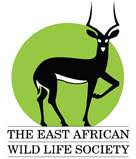Health
Visitors over 1 year of age entering Kenya from yellow fever infected areas require yellow fever international certificate of vaccination. Exemptions are made for visitors arriving from non-endemic areas such as Europe, North America, Australia and New Zealand. Cholera is a health risk in the country and precautions are essential. Malaria is a serious risk in most of the country. The risk level is however lower in the highlands above 2500m, of the Central, Rift Valley, Eastern and Western Provinces. Visitors are strongly advised to take anti-malaria medication commencing two weeks before travel. It is recommended, especially for longer staying visitors, to take vaccinations against hepatitis A, polio and typhoid. HIV-AIDS is prevalent in the country and prudent measures are called for. Some fresh water lakes and rivers carry the risk of Bilharzia and you are advised not to swim or paddle in such areas. There are good hospitals in Nairobi, Mombasa and Kisumu. Chemists can be found in all the major towns.
Visas
Passports valid for 3 months from date of entry are required of all visitors. All visitors require a visa except for citizens of some commonwealth countries. There are also exceptions with varying conditions for citizens of Ethiopia, Turkey, Malaysia, and Uruguay and a few other countries. Airport visas are available although this may result in delays upon arrival. It is advisable to obtain visa's in advance from Kenyan Embassies and High Commissions as some airlines may require it before allowing you to board. Visa requirements vary from time to time and you are advised to check on prevailing status well ahead of travel.
Peoples & Culture
Kenya is made up of more than 70 or so tribal groups. There are also small but influential minorities of Asian, Arab and European origin. More than 90% of the African population falls within the broad categories of Bantu and Nilotic speakers. The main Bantu speakers are Kikuyu, Luhya, Kamba, Gusii, Mijikenda, Embu and Meru. Nilitoc speakers are Maasai, Samburu, Pokot, Turkana, Luo and Kalenjin. At the coast, the interaction of Arabs, Persians and Bantu Africans has resulted in the Swahili people. The Swahili language is now widely spoken in Kenya and throughout Eastern and Central Africa. It is quite useful to have a working knowledge of Swahili if you intend to travel outside the main urban and tourist routes. English is widely understood in urban centers. The de facto national dish is Nyama Choma, barbecued goat meat. But the guy in the street survives on that stodgy filler called Ugali, prepared using maize meal accompanied with some greens. At the coast however the traditional food of the Swahili is a good experience. This is usually based on seafood and rice dishes. Beer lovers will have a good time in Kenya. There are several international standard lagers produced locally. The most popular is named after the elephant, thus Tusker. While on safari, remember to celebrate the African elephant by taking a little Tusker. In the last few years there has been some kind of revival in local music. This revival is led by younger urban artists who sing in Swahili and Sheng, a kind of Creole mix of Swahili and English. The music is a local blend of hip-hop and rap.
Communications
Telephone, fax, telegram, post and Internet services are available in urban centers and locations popular with tourists. International direct dialing to many countries is available in most urban centres. In rural areas international calling is through the operator. The country code for Kenya is 254. Mobile phones are based on GSM 900 network. Coverage extends to the principal urban centres, major highways and parts of popular game reserves such as the Mara. You are however advised to check beforehand whether your GSM phone is usable if you are traveling outside the main urban centres. You can obtain a GSM card that will allow you to make international calls to any country. Currently the country is served by two network operators: KenCell (www.kencell.co.ke) and Safaricom (www.safaricom.co.ke). There are Internet cafes in urban centres and hotels around the country.
Accommodation
You will find good quality accommodation within the main routes popular with tourists and business travelers. This includes Nairobi, Mombasa, Lamu, Malindi, Lake Naivasha, Kisumu and the popular game reserves and national parks such as Maasai Mara, Amboseli, Lake Nakuru, Tsavo, Aberdares, Samburu and the Mount Kenya area. In the parks, accommodation varies from 5 star lodges and tented camps at the upper end, to basic camping at the lower end. Outside the main urban centres and tourist routes, it is difficult to get rated accommodation. See our Kenya hotels, lodges & resorts page to view info and book accommodation for your say in Kenya.
Money
The local currency is the Kenya Shilling (Ksh). There are no restrictions on the import and export of local or foreign currency. But for amounts exceeding US dollars 5,000 or equivalent you will need to declare the source and purpose of the funds. Major currencies such as US dollars and now the Euro and travelers cheques can be converted at major hotels, banks and forex bureaus in the main towns and tourist areas. You will get best exchange rates for cash or travelers cheques if you are dealing in US dollars or Pound Sterling. For this your best deal will be at forex bureaus. Avoid changing money in the streets however favourable the exchange rate may appear. Visa and Mastercard have wide acceptance. But American Express, Diners and other cards have more limited acceptance. Your Visa card can access your bank or credit card account through any Standard Chartered Bank dispenser, 24 hours a day.
Climate
Kenya has such diverse geography, that, temperatures, rainfall and humidity vary widely. The country can be divided into four main regions: the arid north, the savanna lands in the south, the central highlands and the lowlands along the coast and the Lake Victoria region. The coastal areas are hot and humid though tempered by some much welcome sea breezes. Average temperatures vary little year round and range from 22°C minimum to 33°C maximum. The central highlands and rift valley enjoy a pleasant temperate climate. Average temperatures vary from a minimum of 10 to 14°C to a maximum of 22 to 26°C. The Lake Victoria lowlands are hot and dry and temperatures can reach 34°C. Rainfall is also heavy. The semi arid north experiences the most extreme variations in temperatures. This ranges from a maximum of 40°C in the day to 20°C at night. There are two rainy seasons: March to May ("long rains") and October to December ("short rains").
International Travel Kenya is a regional travel hub and has connections by a large number of airlines from all over the world particularly those from Europe, Asia and other parts of Africa. The country has three international airports at Nairobi, Mombasa and Eldoret. The national airline is Kenya Airways, a major player in African air travel. British Airways and Kenya Airways fly to Nairobi direct from London. A few European airlines also have direct flights from their hubs in Europe. Gulf Air and Emirates fly to Nairobi using mid eastern connections. In addition to flying, you can travel by bus between Kenya and Tanzania. The main connections are from Nairobi and Mombasa to Dar es Salaam and from Nairobi to Moshi and Arusha. Occasional ferries leave Mombasa for Zanzibar and Dar es Salaam. Uganda can be reached from Kenya by air, rail and bus. There is a border crossing at Moyale on the Kenya-Ethiopia border and which is mainly used by trucks. Overland travel to Sudan and Somalia is exceedingly difficult at present.
Local Travel
There are scheduled flights to a number of local destinations from Nairobi to Mombasa, Nanyuki, Kisumu, Malindi, Lamu, Lokichogio and the national parks and game reserves of Maasai Mara, Amboseli and Samburu. See our web page for info and booking of local flights in Kenya. You can also travel to a few urban centers in the country by train though this has not been reliable in recent years. Regular bus service links the main urban centers. Around urban areas and shorter links between towns, the popular way to get around is by means of matatu (shared taxi). Rental cars are reliably available from Mombasa, Kisumu and Nairobi. Review our rental cars in Kenya web page and do your booking here. Remember that driving is on the left. Generally, between urban centers the road links are good. The quality deteriorates when you get off the main routes and into more remote locations.
Travel Insurance
Health and the usual travel insurance are recommended. Ensure your travel insurance includes emergency evacuation.
What to Wear
Light clothing is generally recommended in Kenya. The highlands are however temperate and you need a sweater and jacket year round. This is necessary for the evenings and early mornings. If you plan to climb Mount Kenya be ready with special clothing not only for the climb but to protect yourself from sub zero temperatures. . On safari, bright coloured clothing may get you in trouble with the wild animals. Colours of the earth are generally favoured, thus brown, beige and khaki clothing. Short sleeve shirts, shorts and trousers for men are sufficient. For ladies, short sleeve blouses and skirts are ideal in the national parks and touristy places. This is except at the predominantly Muslim coastal areas, where more conservative dressing is called for. But even at the coast, swimwear is perfectly acceptable at beaches and hotel premises.




